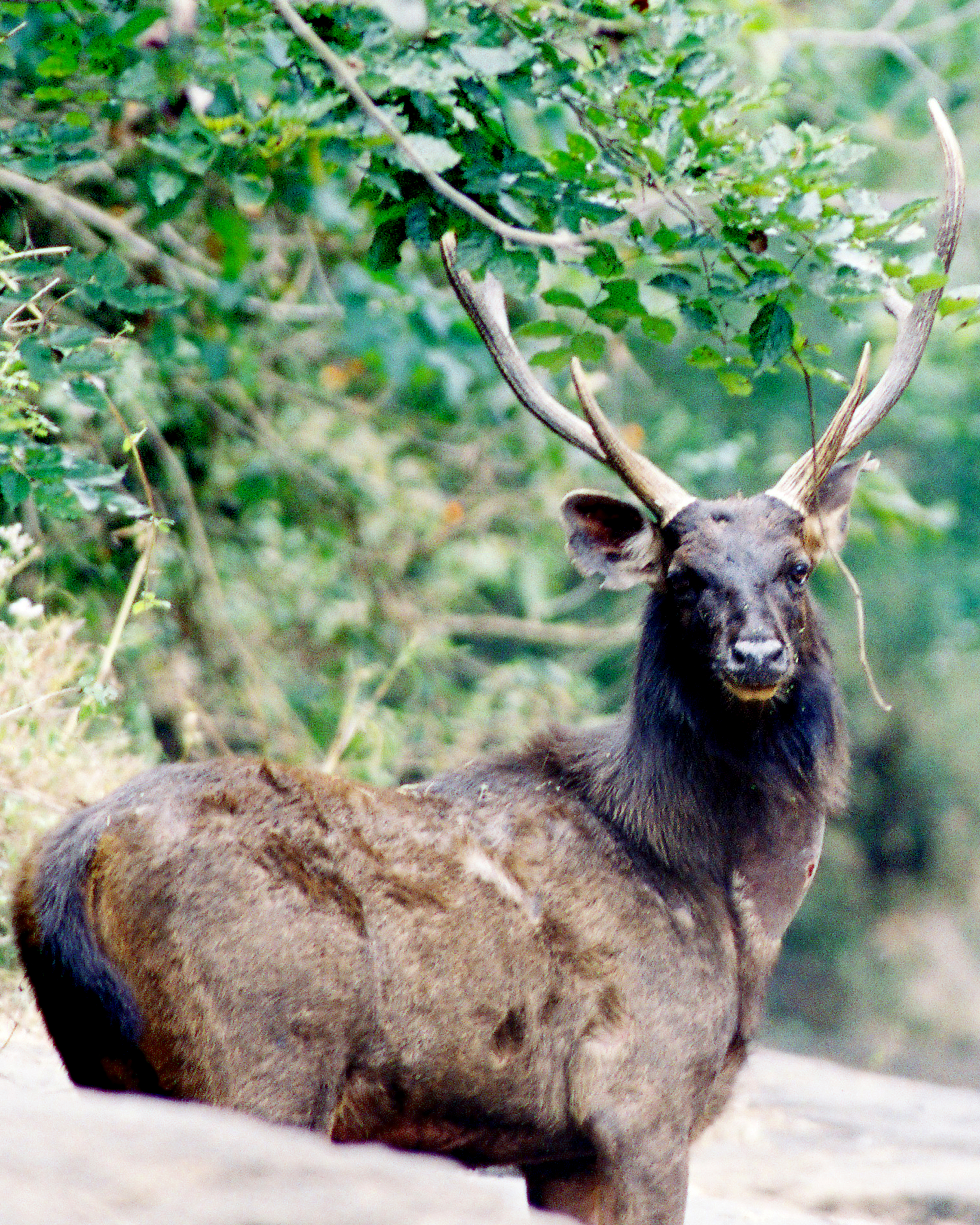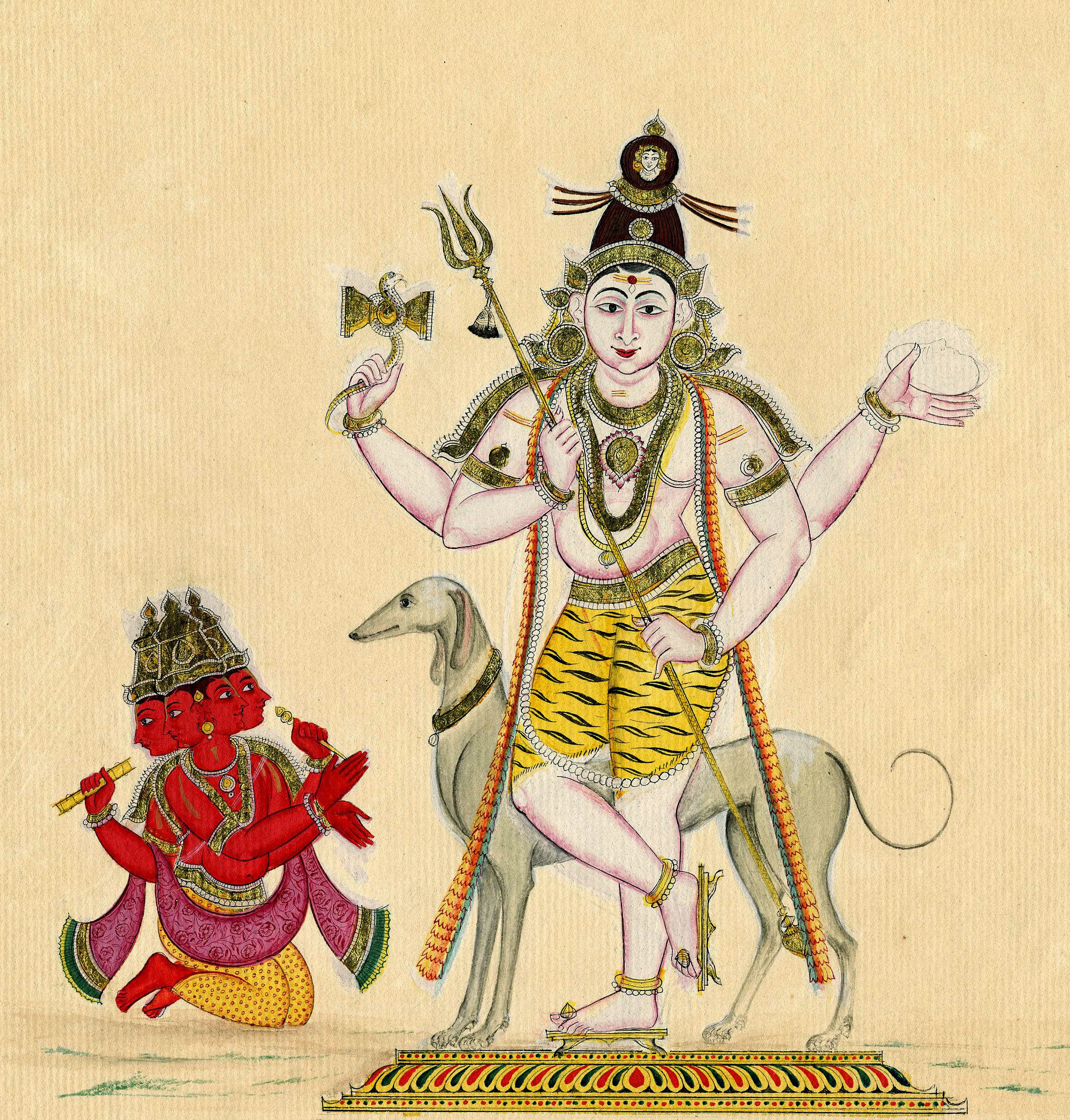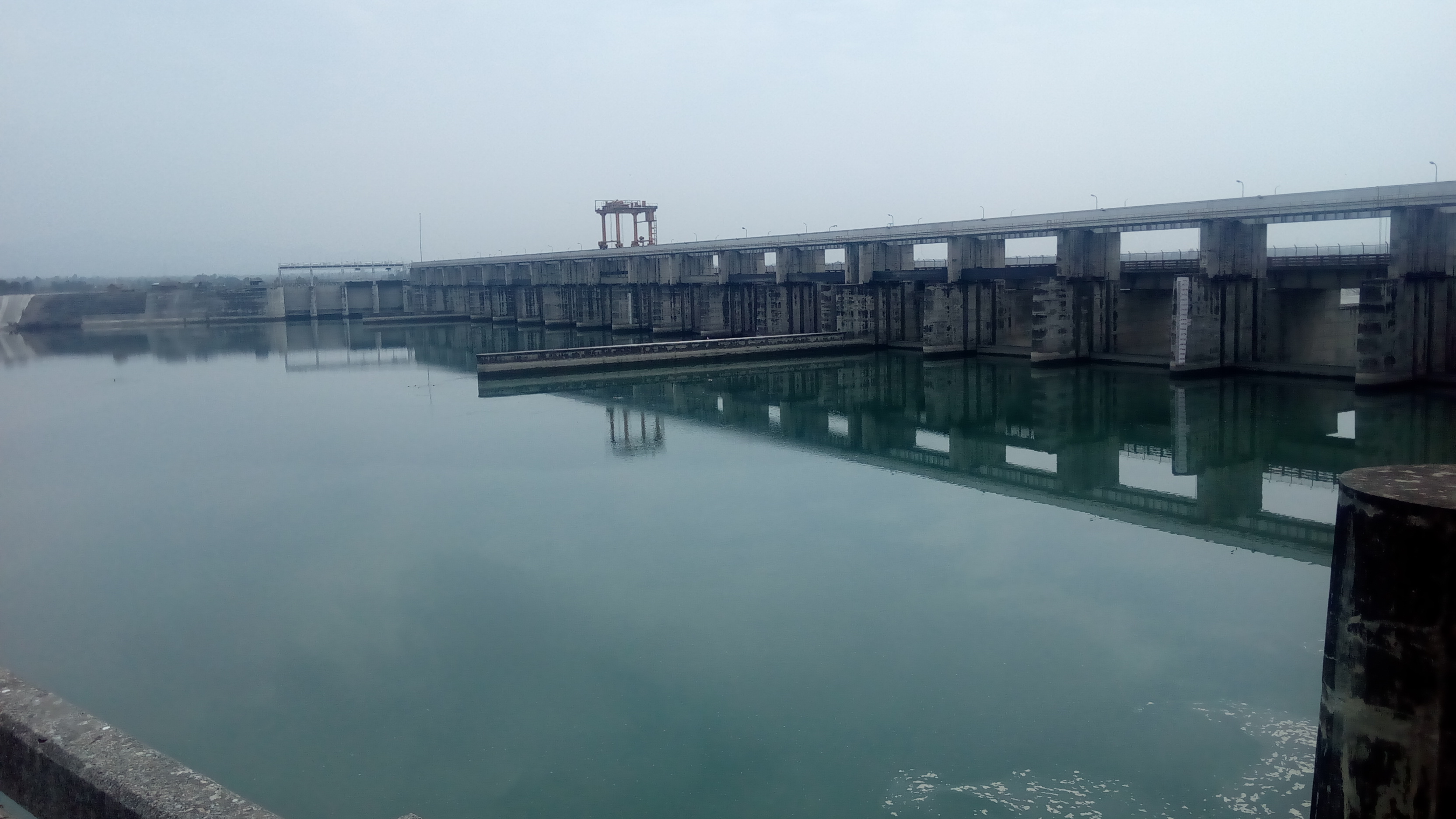|
Kalesar National Park
Kalesar National Park () and adjacent Kalesar Wildlife Sanctuary ( are protected areas in Kalesar of Yamunanagar district of Haryana state in India, 46 kilometres from Yamunanagar city, from Chandigarh. Kalesar National Park was established in 2003. Kalesar National Park and Kalesar Wildlife Sanctuary are contiguous to Simbalbara National Park in Himachal Pradesh and Rajaji National Park in Uttarakhand. Kalesar is a popular destination for leopards, panthers, elephants, red jungle fowl and bird-watching. This forested area in the Shivalik foothills is covered primarily with sal with smattering of Semul, Amaltas and Bahera trees as well. Wildlife jeep safaris are available on 3 tracks. Park is closed July to September and during the remaining months visiting hours are 6 am to 10 am and 4 pm to 7 pm during summers, and 7 am to 11 am and 3.30 pm to 6 pm during winters. History Kalesar National Park spread across was notified on 8 December 2003 and adjacent Kalesar Wildl ... [...More Info...] [...Related Items...] OR: [Wikipedia] [Google] [Baidu] |
Kapal Mochan
Gopal Mochan is an ancient place of pilgrimage for both Hindus and Sikhs, 17 km north-east of Yamunanagar, Yamunanagar city-Jagadhari town, on the Bilaspur road in Yamunanagar district, Haryana, India. It is also called Gopal Mochan and Somsar Mochan. As per Legend, ''Brāhmanahatya'' i.e. killing of Brahmin is considered as a major sin, but one who kills a Brahmin and bath here, his ''Brāhmanahatya'' sins will be washed. Nearby Bilaspur, Haryana (not to be confused with Bilaspur, Himachal Pradesh) in Yamuna Nagar District which takes its name from the corrupted form of "Vyas Puri", was the ashram of Vyasa, Ved Vyasa rishi where he wrote the Mahabharta on the banks of Sarasvati river near Adi Badri (Haryana), Adi Badri where Sarasvati river leaves Himalayas and enters the plains. It is one of the most ancient vedic religious site in Haryana along with 48 kos parikrama of Kurukshetra and Dhosi Hill. Demographics India census, Bilaspur had a population of 9620. Males const ... [...More Info...] [...Related Items...] OR: [Wikipedia] [Google] [Baidu] |
Yamunanagar District
Yamunanagar district is one of the 22 districts of the Indian state of Haryana. The district came into existence on 1November 1989 and occupies an area of . Yamunanagar town is the district headquarters. Yamunanagar's average rainfall in Monsoon is 892 mm, which is much higher than the state average of 462 mm. The district is bounded by Himachal Pradesh state in the north, by Uttar Pradesh state in the east, by Karnal district in the south, by Kurukshetra district in the southwest and Ambala district in the west. Divisions The district is divided into 3 sub divisions: Jagadhri, Radaur and Bilaspur. There are 4 tehsils: Jagadhri, Chhachhrauli, Radaur and Bilaspur. These are further divided into 7 development blocks: Bilaspur, Sadhaura, Radaur, Jagadhri, Chhachhrauli, Saraswati Nagar and Partap Nagar. There are 4 Vidhan Sabha constituencies in the district: Sadhaura, Jagadhri, Yamuna Nagar and Radaur. While Sadhaura, Jagadhri and Yamuna Nagar are part of Ambala Lok ... [...More Info...] [...Related Items...] OR: [Wikipedia] [Google] [Baidu] |
Cassia Fistula
''Cassia fistula'', also known as golden shower, purging cassia, Indian laburnum, kani konna, or pudding-pipe tree,U. S. Department of Agriculture, William Saunders; Catalogue of Economic Plants in the Collection of the U. S. Department of Agriculture; Washington D. C.; June 5, 1891 is a flowering plant in the family Fabaceae. The species is native to the Indian subcontinent and adjacent regions of Southeast Asia. It is the official state flower of Kerala state and Delhi UT in India, as well as the national tree and flower of Thailand. It is also a popular ornamental plant and is also used in herbal medicine. Vernacular Names *Cassia fistula* is widely known by local names across the Indian subcontinent and other regions due to its prominent medicinal, cultural, and ornamental importance. Description The golden shower tree is a medium-sized tree, growing to tall with fast growth. The leaves are deciduous, long, and pinnate with three to eight pairs of leaflets, eac ... [...More Info...] [...Related Items...] OR: [Wikipedia] [Google] [Baidu] |
Panchamukha
Panchamukha (), also rendered Panchamukhi, is a concept in Hindu iconography, in which a Hindu deities, deity is represented with five heads. Several Hindu deities are depicted with five faces in their iconography, such as Hanuman, Shiva, Brahma, Ganesha, and Gayatri. Iconography Hanuman The deity Hanuman is sometimes featured with five-faces in his iconography, known as Panchamukhi Hanuman, or Panchamukha Anjaneya. Each head is that of a deity associated with Vishnu, and is depicted to be facing a cardinal direction: Hanuman faces the east, Narasimha faces the south, Varaha faces the north, Garuda faces the west, and Hayagriva faces the sky. This iconography is not regarded to exist in mainstream Hinduism, and has been primarily featured in the Tantra tradition only since the 15th century CE. The description of the appearance of Panchamukha Hanuman is found in a Tantric treatise called the ''Hanumat Rahashyam''. The section of the text called the ''Panchamukhahanumat Kavacham ... [...More Info...] [...Related Items...] OR: [Wikipedia] [Google] [Baidu] |
Hathni Kund Barrage
The Hathni Kund is a concrete barrage located on the Yamuna River in Yamuna Nagar district of Haryana state, India. It was constructed between October 1996 and June 1999 for the purpose of irrigation. It replaced the Tajewala Barrage downstream which was constructed in 1873 and is now out of service. The barrage diverts water into the Western and Eastern Yamuna Canals. The small reservoir created by the barrage also serves as a wetland for 31 species of waterbird. Plans to replace the Tajewala Barrage had been in the works since the early 1970s but an agreement between the governments of Haryana and Himachal Pradesh (which share the water it diverts) was not made until July 1994. Although the barrage was completed in late 1999, it was not operational until March 2002 because of work delays. The barrage is long and its spillway A spillway is a structure used to provide the controlled release of water downstream from a dam or levee, typically into the riverbed of the damm ... [...More Info...] [...Related Items...] OR: [Wikipedia] [Google] [Baidu] |
National Highway 907 (India)
National Highway 907 (NH 907) is an Indian National Highway starts from Paonta Sahib, Himachal Pradesh and ends at Yamuna Nagar, Haryana. The highway is long. Before renumbering of national highways of India, route of NH-907 was part of old national highway 73A. Route NH907 links Paonta Sahib, Darpur, Ledi, Chhachhrauli, Jagadhri Chowk and Yamuna Nagar in the states of Haryana and Himachal Pradesh. Junctions : Terminal near Paonta Sahib. : Terminal near Yamuna Nagar. See also * List of national highways in India * List of national highways in India by state * National Highways Development Project The National Highways Development Project (NHDP) was a project of four laning of existing national highways and six laning of selected major national highways of India. The project was started in 1998 under the leadership of Prime Minister of I ... References External linksNH 907 on OpenStreetMap National highways of India National highways in Haryana Nat ... [...More Info...] [...Related Items...] OR: [Wikipedia] [Google] [Baidu] |
Shiva
Shiva (; , ), also known as Mahadeva (; , , Help:IPA/Sanskrit, [mɐɦaːd̪eːʋɐh]) and Hara, is one of the Hindu deities, principal deities of Hinduism. He is the God in Hinduism, Supreme Being in Shaivism, one of the major traditions within Hinduism. Shiva is known as ''The Destroyer'' within the Trimurti, the Hinduism, Hindu trinity which also includes Brahma and Vishnu. In the Shaivite tradition, Shiva is the Supreme Lord who creates, protects and transforms the universe. In the goddess-oriented Shaktism, Shakta tradition, the Supreme Goddess (Devi) is regarded as the energy and creative power (Shakti) and the equal complementary partner of Shiva. Shiva is one of the five equivalent deities in Panchayatana puja of the Smarta Tradition, Smarta tradition of Hinduism. Shiva has many aspects, benevolent as well as fearsome. In benevolent aspects, he is depicted as an Omniscience, omniscient yogi who lives an Asceticism#Hinduism, ascetic life on Kailasa as well as a house ... [...More Info...] [...Related Items...] OR: [Wikipedia] [Google] [Baidu] |
Hindu
Hindus (; ; also known as Sanātanīs) are people who religiously adhere to Hinduism, also known by its endonym Sanātana Dharma. Jeffery D. Long (2007), A Vision for Hinduism, IB Tauris, , pp. 35–37 Historically, the term has also been used as a geographical, cultural, and later religious identifier for people living in the Indian subcontinent. It is assumed that the term ''"Hindu"'' traces back to Avestan scripture Vendidad which refers to land of seven rivers as Hapta Hendu which itself is a cognate to Sanskrit term ''Sapta Sindhuḥ''. (The term ''Sapta Sindhuḥ'' is mentioned in Rig Veda and refers to a North western Indian region of seven rivers and to India as a whole.) The Greek cognates of the same terms are "''Indus''" (for the river) and "''India''" (for the land of the river). Likewise the Hebrew cognate ''hōd-dū'' refers to India mentioned in Hebrew BibleEsther 1:1. The term "''Hindu''" also implied a geographic, ethnic or cultural identifier for ... [...More Info...] [...Related Items...] OR: [Wikipedia] [Google] [Baidu] |
Sirmur State
Sirmur (also spelled as Sirmor, Sirmaur, Sirmour, or Sirmoor) was a princely state of India, located in the region that is now the Sirmaur district of Himachal Pradesh. The state was also known as Nahan, after its main city, Nahan. The state ranked predominant amongst the Punjab Hill States. It had an area of 4,039 km2 and a revenue of 300,000 rupees in 1891. History Origin According to Mian Goverdhan Singh in ''Wooden Temples of Himachal Pradesh'', the principality of Sirmaur was founded in the 7th to 8th century by Maharaja of Parmar Rajputs, and Rathore noble. Nahan State Nahan, the predecessor state of Sirmur, was founded by Soba Rawal in 1095 AD who assumed the name Raja Subans Prakash. Near the end of the 12th century in the year 1195, a flood of the Giri River destroyed the old capital of Sirmaur-Tal, which killed Raja Ugar Chand. A ruler of Jaisalmer, Raja Salivahana, thought this was an opportune time to attack the state as it was in a state of disa ... [...More Info...] [...Related Items...] OR: [Wikipedia] [Google] [Baidu] |
Rollo Gillespie
Major-general (United Kingdom), Major-General Sir Hugh Robert Rollo Gillespie (21 January 1766 – 31 October 1814Dictionary of Indian Biography; Charles E Buckland p166 (1906)) was an officer in the British Army. The Army's historian Sir John Fortescue called him "The bravest man ever to wear a red coat". Early life Hugh Robert Rollo Gillespie was born on 21 January 1766 and grew up in Comber, County Down, in what is now Northern Ireland. He was educated at Kensington and near Newmarket After turning down the opportunity of going to Cambridge University he joined the 3rd Irish Horse during 1783 as a Cornet (military rank), Cornet. On 24 November 1786, Gillespie secretly married Annabella Taylor, the fourth daughter of Thomas Taylor of Taylor Grange, Co. in the county of Dublin, they would later had a son whom also named after him. In 1787 he accompanied the regiment to Athy. There he was involved in a duel in which he killed the opposing duellist. Fleeing to a friend's house ... [...More Info...] [...Related Items...] OR: [Wikipedia] [Google] [Baidu] |
British Raj
The British Raj ( ; from Hindustani language, Hindustani , 'reign', 'rule' or 'government') was the colonial rule of the British The Crown, Crown on the Indian subcontinent, * * lasting from 1858 to 1947. * * It is also called Crown rule in India, * * * * or direct rule in India. * Quote: "Mill, who was himself employed by the British East India company from the age of seventeen until the British government assumed direct rule over India in 1858." * * The region under British control was commonly called India in contemporaneous usage and included areas directly administered by the United Kingdom of Great Britain and Ireland, United Kingdom, which were collectively called ''Presidencies and provinces of British India, British India'', and areas ruled by indigenous rulers, but under British British paramountcy, paramountcy, called the princely states. The region was sometimes called the Indian Empire, though not officially. As ''India'', it was a founding member of th ... [...More Info...] [...Related Items...] OR: [Wikipedia] [Google] [Baidu] |
Pinjore Gardens
Yadavindra Gardens, also known as Pinjore Gardens, is a historic 17th century garden located in Pinjore city of Panchkula district in the Indian States and territories of India, state of Haryana. Panchkula, Panchkula city is nearby it. It is an example of the Mughal gardens architectural style, which was renovated by the Patiala dynasty Sikh rulers. The garden was built by Fidai Khan Koka, Fidai Khan, a foster-brother to the Mughal Emperor Aurangzeb. Location The garden in the city of Pinjore on the Ambala-Shimla road, near the ancient 8th century open-air archaeological museum site of Bhima Devi TempleComplex, is from Chandigarh, from List of World Heritage Sites in India, UNESCO World Heritage Kalka–Shimla Railway and from Delhi. It is approachable by road, rail and air from all parts of the country. History It was built in the foothills of Himalayas as one of the Mughal gardens summer retreat for the Aurangzeb (r. 1658–1707), who then had his capital at Lahore, b ... [...More Info...] [...Related Items...] OR: [Wikipedia] [Google] [Baidu] |









